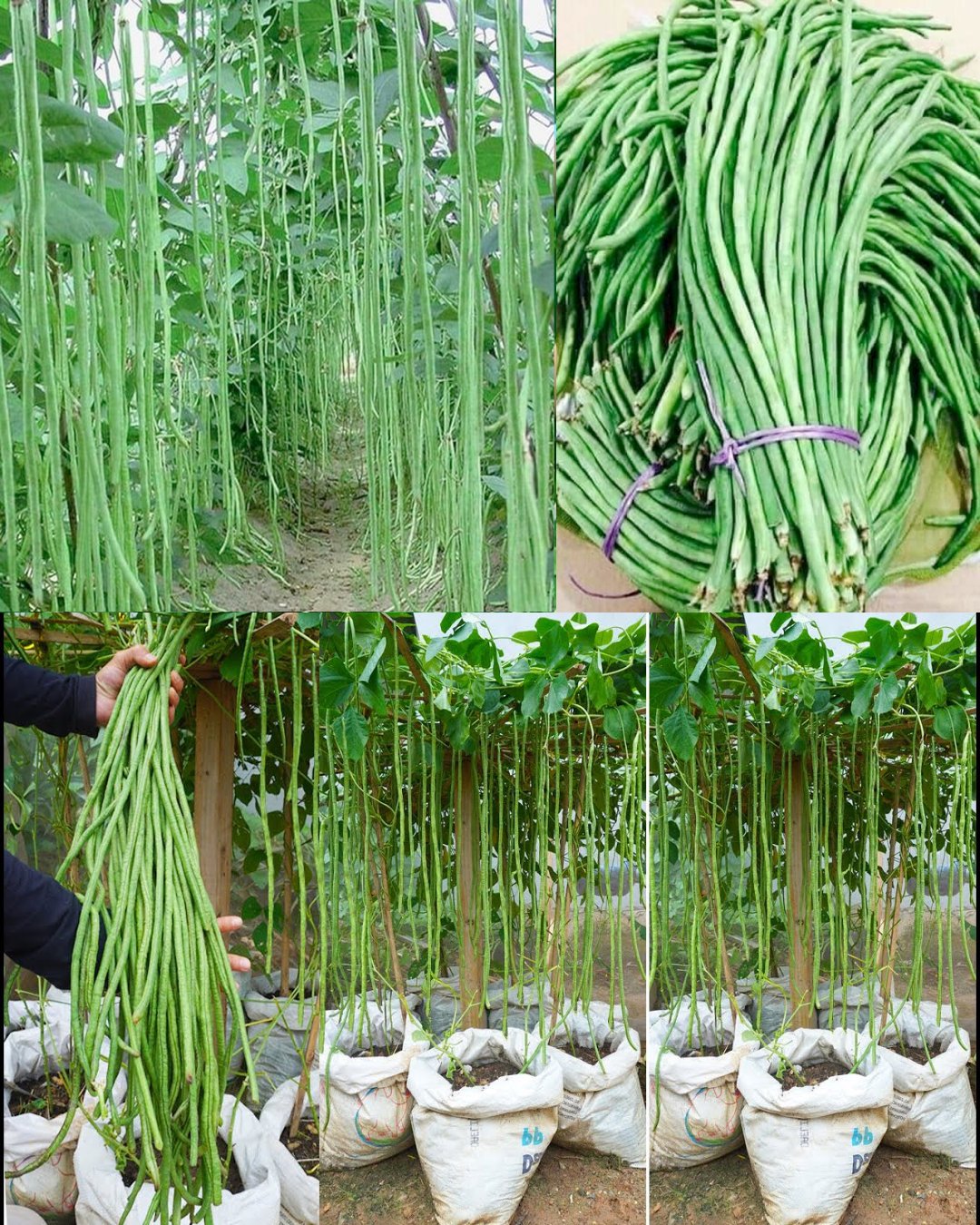From Seed to Harvest: The Beginner’s Guide to Growing Long Beans in Pots 🌱✨
Long beans, also known as yardlong beans or snake beans, are a highly productive and nutritious vegetable perfect for small-space gardening. With their ability to grow vertically, they’re an excellent choice for container gardening. Here’s a step-by-step guide for beginners to grow long beans in pots from seed to harvest.
Why Grow Long Beans in Pots?
- Space Efficiency: Perfect for balconies, patios, and small gardens.
- High Yield: A single plant can produce many pods over the growing season.
- Ease of Care: Long beans are low-maintenance and grow well in containers.
Step 1: Choose the Right Container
- Size: Use a pot that’s at least 12 inches deep and wide, with good drainage holes.
- Material: Plastic, ceramic, or clay pots all work well. Ensure durability for outdoor conditions.
- Support: Install a trellis, stakes, or a bamboo teepee in the pot for the vines to climb.
Step 2: Select the Seeds
- Variety: Choose a long bean variety suited for your climate. Popular types include green, purple, and red yardlong beans.
- Quality: Purchase seeds from a reputable source for the best germination rates.
Step 3: Prepare the Soil
- Soil Mix: Use a well-draining potting mix enriched with organic matter like compost or aged manure.
- pH Level: Long beans prefer slightly acidic to neutral soil (pH 6.0–7.0).
Step 4: Planting the Seeds
- Soak the Seeds: Soak seeds in water for 6–8 hours before planting to speed up germination.
- Spacing: Plant seeds 1–2 inches deep and 3–4 inches apart in the container.
- Cover: Lightly cover the seeds with soil and water gently.
Step 5: Provide Optimal Growing Conditions
- Sunlight: Place the pot in a location that receives 6–8 hours of direct sunlight daily.
- Watering: Keep the soil consistently moist but not waterlogged. Water deeply when the top inch of soil feels dry.
- Temperature: Long beans thrive in warm temperatures between 70–85°F (21–29°C).
Step 6: Support the Vines
- As the seedlings grow, tie the vines gently to the trellis or stakes. This keeps the plants upright, improves air circulation, and makes harvesting easier.
Step 7: Fertilize Regularly
- First Feeding: Apply a balanced liquid fertilizer once the seedlings develop 2–3 true leaves.
- Ongoing Feeding: Feed every 2–3 weeks with a low-nitrogen fertilizer to encourage flowering and pod production.
Step 8: Monitor for Pests and Diseases
- Common Pests: Aphids, spider mites, and caterpillars may attack long beans. Use neem oil or insecticidal soap for control.
- Diseases: Prevent fungal issues by ensuring good air circulation and avoiding overhead watering.
Step 9: Harvesting the Beans
- When to Harvest: Long beans are ready to harvest 60–75 days after planting. Pick them when they are 12–18 inches long but still tender.
- How to Harvest: Use scissors or pruners to cut the pods, avoiding damage to the plant.
Step 10: Post-Harvest Care
- Encourage Continuous Production: Regularly harvest pods to stimulate further growth.
- End of Season: After the growing season, compost the plant material and refresh the soil in the pot for future planting.
Pro Tips for Growing Long Beans
- Plant Successively: Sow seeds every 2–3 weeks for a continuous harvest.
- Mulch: Add a layer of mulch to retain moisture and regulate soil temperature.
- Companion Plants: Grow with marigolds, basil, or garlic to repel pests.
Why Grow Long Beans?
- Nutrition: Long beans are a rich source of vitamins A, C, and fiber.
- Productivity: A single plant can yield abundant pods over weeks.
- Beauty: The trailing vines and bright green pods add an aesthetic touch to your container garden.
By following these simple steps, you’ll be well on your way to enjoying homegrown long beans in no time! 🌿 Happy gardening!
💬 Have you tried growing long beans in pots? Share your tips and experiences below!
#LongBeans #ContainerGardening #HomegrownVegetables #GardeningForBeginners
